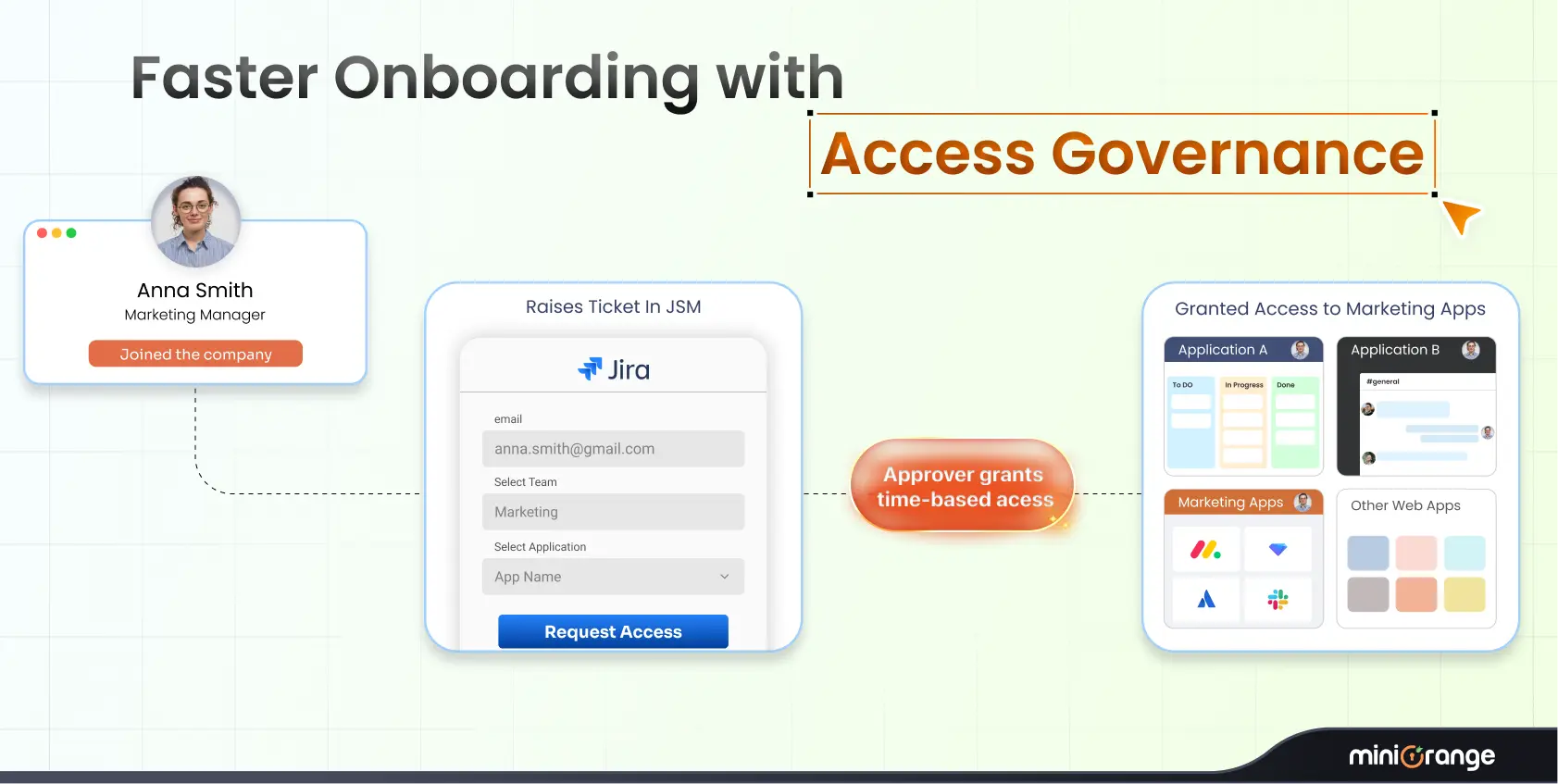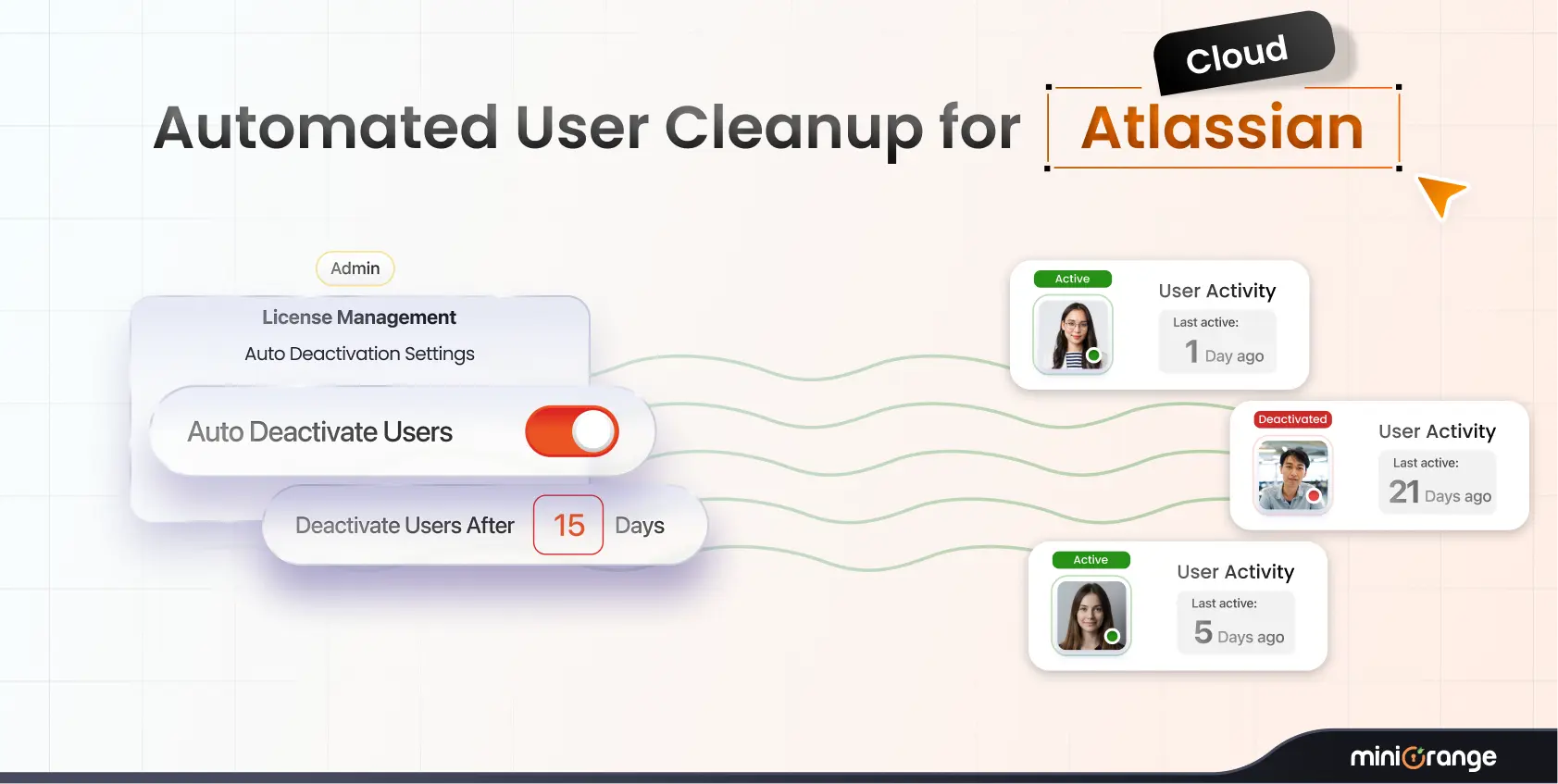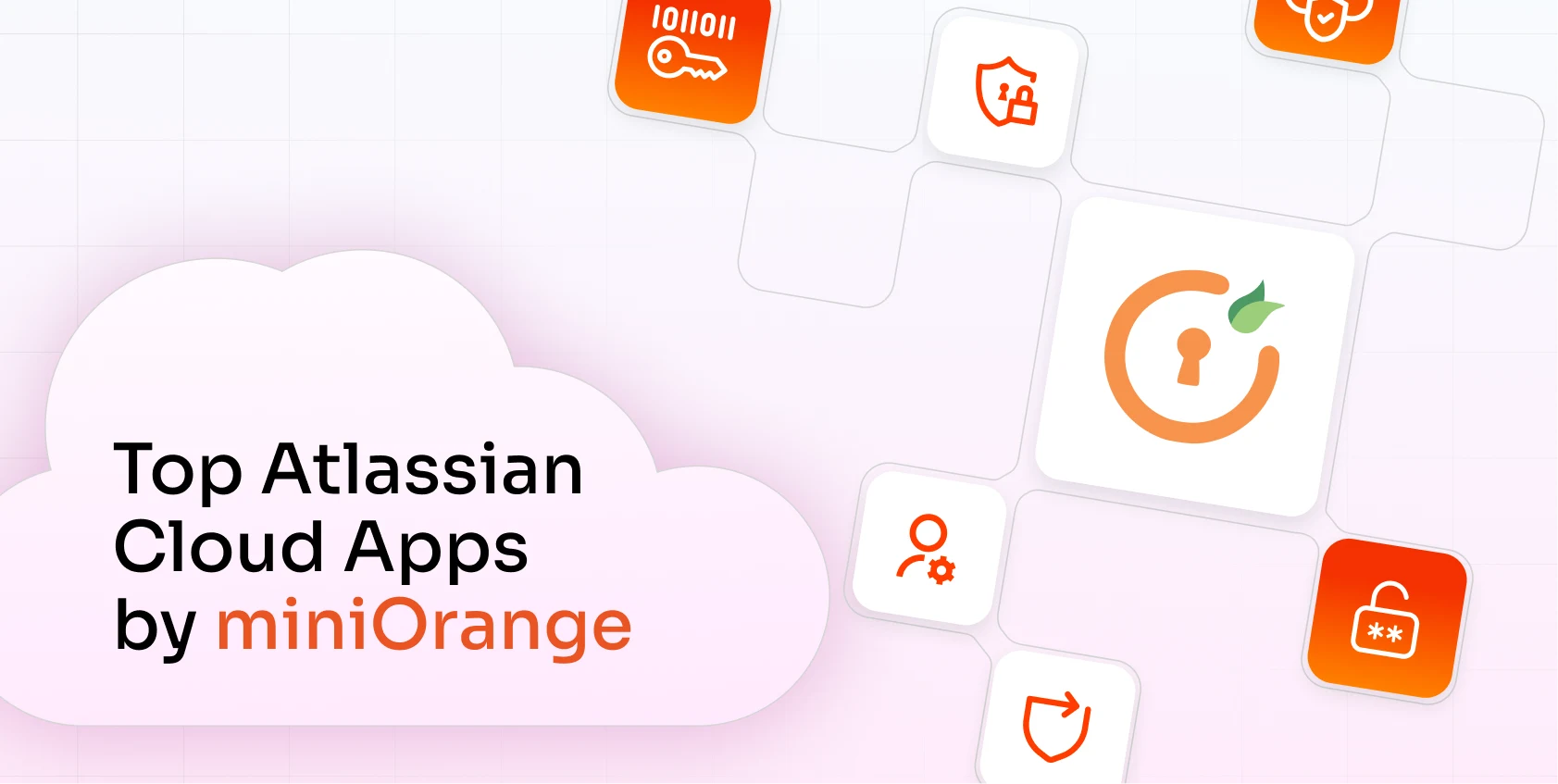Remove Users from Groups for Never-Logged-In Accounts: Automating Jira, Confluence, Bitbucket & JSD Cloud Management
What Is Automated User Management?
Managing active and inactive users across Jira, Confluence, Bitbucket, and JSD Cloud becomes critical when dealing with multiple users and expensive license tiers.
The miniOrange Automated User Management app provides:
- Specific control with separate configuration panels for each application
- Ability to set inactivity thresholds (e.g. 30 days)
- Target group selection for removal
- Special handling for users who have never logged in
This unified approach helps eliminate manual processes while providing flexible skip group options to protect essential users.
The Growing Problem: Manual User Management at Scale
The Enterprise Challenge
Enterprise organizations face a mounting challenge when managing user access across multiple Atlassian products.
The Common Scenario: Your company operates with numerous licensed users distributed across:
- Jira Software
- Confluence
- Bitbucket
- Jira Service Desk Cloud instances
Every day, employees join teams, change roles, or leave the organization entirely, yet their access permissions often remain unchanged.
Pain Points of Manual Management The manual approach to user management creates several pain points:
Administrative Burden:
- Administrators spend countless hours reviewing user lists
- Manual checking of login histories across applications
- Time-consuming removal of inactive accounts from various groups
License Waste:
- Users never log into specific applications despite having access through group memberships
Example: A developer might be assigned to both Jira Software and Confluence groups but never actually uses Confluence, yet continues consuming a license
The Financial Impact
Research indicates that 10-20% of licensed users remain inactive across most organizations, representing significant financial overhead.
Key Issues:
- Users maintain group memberships without logging in
- Companies continue paying for unused licenses
- Potential security vulnerabilities through dormant accounts
- Challenge becomes significantly complex as organizations scale to multi-user environments with hundreds or thousands of active accounts
The Automated Solution: Application-Specific Group Management
What The Solution Provides
The solution lies in automated user management, which monitors user activity and adjusts group memberships accordingly. The miniOrange Automated User Management app addresses this challenge through dedicated configuration panels for each Atlassian application.
Specific Control Across All Applications
The interface provides separate automation settings for each product, as demonstrated in the configuration panels:
Jira Software Administration
Core Functionality:
- Admins can define the Jira inactivity period, after which users will be removed from the selected Jira group, effectively revoking their access to Jira
- Toggle controls enable auto-removal and settings for handling users who have never logged into Jira
- The "Remove never logged in users" setting targets accounts created but never used
How It Works: The app determines user inactivity by checking each user's Last login date in Jira before removing them from selected groups.
Confluence Management
Automated Process:
- Administrators can configure automatic removal of users inactive for a specified number of days (default 30 days) from selected Confluence groups.
- The system includes toggle controls for enabling auto-removal and specific settings for handling users who have never logged into Confluence.
- The "Remove never logged in users" feature specifically targets accounts that received access but never engaged with the platform.
Technical Implementation: The system checks the Last login timestamp in Confluence to identify and remove inactive users from the configured groups.
Bitbucket Access Control
Targeted Management:
- The Bitbucket panel allows targeted group management, such as removing inactive users from specific teams like "mobile team".
- Protects essential groups like "admins" through skip group functionality
- The interface shows how administrators can select specific groups for automated removal while maintaining protection for critical access groups.
Inactivity Determination: Inactivity is determined using the Last login data from Bitbucket, ensuring only users who have not accessed the platform within the specified period are removed.
Jira Service Desk Management
Service Desk Controls:
- Similar controls apply to JSD users, ensuring service desk access remains current while preventing license waste from inactive agents or customers.
- The removal process relies on the Last login information for Jira Service Desk users to accurately target inactive accounts.
- The dedicated panel provides identical functionality with application-specific group targeting.
Advanced Configuration Features
Each application panel includes sophisticated settings that address real-world management challenges:
Skip Groups for Auto-Remove Access
Critical Protection Feature: This critical feature prevents automatic removal of users from essential groups.
Example Implementation:
- The admin group can be protected to ensure Jira, Confluence, Bitbucket, JSD access remains intact regardless of login frequency.
- The Bitbucket configuration demonstrates this functionality by showing admins as a protected group.
Remove Never Logged In Users
Specialized Targeting: A specialized toggle that specifically targets users who have received access but never actually used the application, addressing the common issue of over-provisioned accounts during onboarding processes.
Flexible Time Thresholds
Customization Options:
- The 30 day default can be adjusted based on organizational requirements
- Allows for different policies across applications
- Some organizations might prefer shorter periods for cost-sensitive applications or longer periods for seasonal users
Transformation: From Manual Overhead to Smart Automation
Operational Benefits
Organizations implementing this automated user management approach experience improvements in both operational execution and financial outcomes. The unified interface of miniOrange automated user management app eliminates the need to navigate multiple administrative panels while providing application-specific control that matches real-world usage patterns.
Financial Impact and License Management
Direct Cost Benefits
The automation directly addresses licensing costs by maintaining active group memberships only for engaged users.
Example Scenario: When a user remains inactive in Bitbucket for 30 days, automatic removal from the Bitbucket team group immediately frees that license for active developers. Meanwhile, the same user might remain active in Jira, preserving their necessary access while reducing overall license consumption.
Never-Logged-In User Management
The Remove never logged in users feature proves particularly valuable during organizational changes:
Common Use Cases:
- New employees often receive broad access during onboarding but may never actually use certain applications
- This feature identifies and removes these accounts automatically
- Prevents unnecessary license upgrades while maintaining appropriate access for genuinely active users
Multi-User Environment Benefits
Multi-user environments benefit significantly from this approach:
Scale Advantages:
- Instead of manually tracking login activity across multiple users and several applications, administrators can establish policies once and allow the system to handle ongoing maintenance
- This becomes especially valuable for organizations managing several hundred users across different teams and projects
Security and Compliance Benefits
Enhanced Security Through Automation
Automated group management improves security:
Security Improvements:
- Dormant accounts with persistent group memberships create potential attack vectors, especially when users change roles or leave the organization
- The system's ability to track login activity across all applications provides visibility into actual user engagement patterns
Protected Access Management
The Skip Groups functionality ensures that critical access remains protected:
Access Protection:
- Administrative accounts and essential service users maintain their permissions regardless of login frequency
- Prevents accidental lockouts while still managing general user populations effectively
Compliance and Audit Support
Regular automated reviews also support adherence to security measures:
Compliance Benefits:
- Maintains current access records
- Provides audit trails for user activity
- Becomes particularly important for organizations subject to regulatory oversight or security certifications
Operational Transformation
Rather than dedicating administrative hours to manual user reviews across four different applications, teams can configure policies once and let the system handle ongoing maintenance.
Key Advantages:
- The application specific controls allow for nuanced management that reflects how different teams actually use each tool
Scalability and Implementation
For organizations seeking thorough Atlassian user management capabilities, this approach provides automation with the flexibility to accommodate diverse organizational structures and usage patterns.
The system scales effectively from small teams to large enterprise deployments with multiple user tiers.
Results and Transformation
- The unified management approach transforms user lifecycle administration from a reactive, time-consuming process into a proactive, smart system that adapts to real user behavior while maintaining security and controlling costs across the entire Atlassian ecosystem.
- Organizations report significant cost savings, productivity jump, and improved license utilization within the first month of implementation.
Getting Started
Try the miniOrange Atlassian User Management app for free today and see how easy managing inactive users can be.
Have questions?
Contact our experts for personalized support and guidance.
Ready to implement automated user management across your Atlassian environment? Explore detailed documentation and configuration guides for setting up applications.
Reference Links
- Other Blog Link - https://www.miniorange.com/blog/what-is-bulk-user-management/
- Use Case Link - https://www.miniorange.com/atlassian/bulk-user-management-for-denso
Frequently Asked Questions
Everything You Need to Know About Automating Inactive User Removal in Atlassian
1. What qualifies a user as "inactive"?
A user is considered inactive if they haven’t logged into a specific Atlassian application (Jira, Confluence, Bitbucket, or Jira Service Desk) for a defined number of days, typically 30 by default. Admins can customize this threshold based on organizational needs.
2. Can I remove users who have never logged in?
Yes. The miniOrange app includes a Remove never logged in users setting that targets accounts that were provisioned access but never actually used the application—helping you eliminate waste from over-assigned licenses.
3. Will it affect users who are active in one app but inactive in another?
No. The app provides application-specific control, so a user inactive in Confluence but still active in Jira will only be removed from the Confluence group while retaining Jira access.
4. Can I protect critical users like admins from being removed?
Absolutely. The Skip Groups feature allows you to exempt high-priority groups (like admin or dev-leads) from automated removal, ensuring essential access remains intact.
5. How is inactivity detected for each user?
The system checks the Last Login timestamp for each user in the relevant application (Jira, Confluence, Bitbucket, JSD). If this date exceeds the configured inactivity threshold, the user is marked for removal from selected groups.
6. Is this solution secure?
Yes. It enhances security by automatically revoking access from dormant accounts, reducing attack surfaces, and maintaining clean, audit-ready user records.
7. Can I apply different inactivity rules for different products?
Yes. You can define custom time thresholds per application, e.g., 15 days for Bitbucket, 45 days for Confluence—depending on how often users engage with each tool.
8. What happens when a user logs in again after being removed?
Once removed, the user would need to be re-added to the appropriate group by an admin or through provisioning rules (like SCIM or onboarding workflows). The app doesn't auto-reassign access after removal.




Leave a Comment